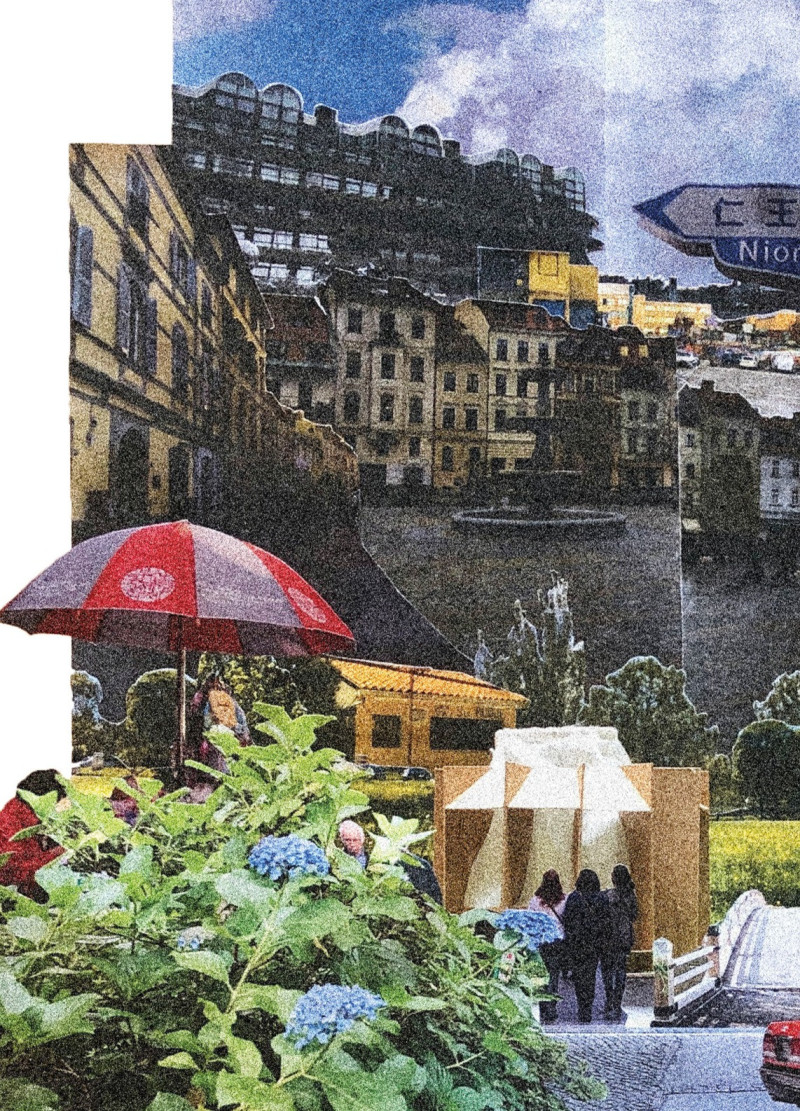5 key facts about this project
The pavilion offers a thoughtful approach to the discussion of death. Located in a public area, it functions as both a quiet space for personal reflection and a place for community conversations. The design concept aims to make the topic of mortality more visible and approachable. It allows people to share their thoughts and feelings in a supportive setting. This space fosters openness, encouraging individuals to confront their emotions regarding loss.
Spatial Organization
The layout of the pavilion prioritizes accessibility and interaction among visitors. During the day, the space invites dialogue and promotes a sense of calm. Open areas within the design facilitate social engagement, while more secluded spots cater to those seeking personal contemplation. By providing varied environments, the pavilion encourages users to choose their own path, whether they seek connection with others or a moment of solitude.
Materiality
Material selection is important in shaping the pavilion’s character. A strong steel frame supports the structure and allows for large, open spaces. Textiles help soften the overall design and create a welcoming environment. The use of wood adds a natural element, connecting the pavilion to its surroundings. These materials work together to build a warm atmosphere, where visitors feel at ease as they explore their thoughts on mortality.
Transformation of Use
The pavilion offers flexibility in how it is used throughout the day. In the daytime, it primarily serves as a space for conversation and reflection. As evening approaches, its function shifts to a place of commemoration. This ability to adapt helps meet the emotional needs of visitors. The architectural design speaks to the complexities of life, allowing individuals to engage thoughtfully with their experiences of loss.
By providing a setting for both personal and shared experiences, the pavilion encourages visitors to confront the realities of life and death. Its carefully designed spaces invite contemplation and community, making the dialogue around mortality more accessible and meaningful.


















































